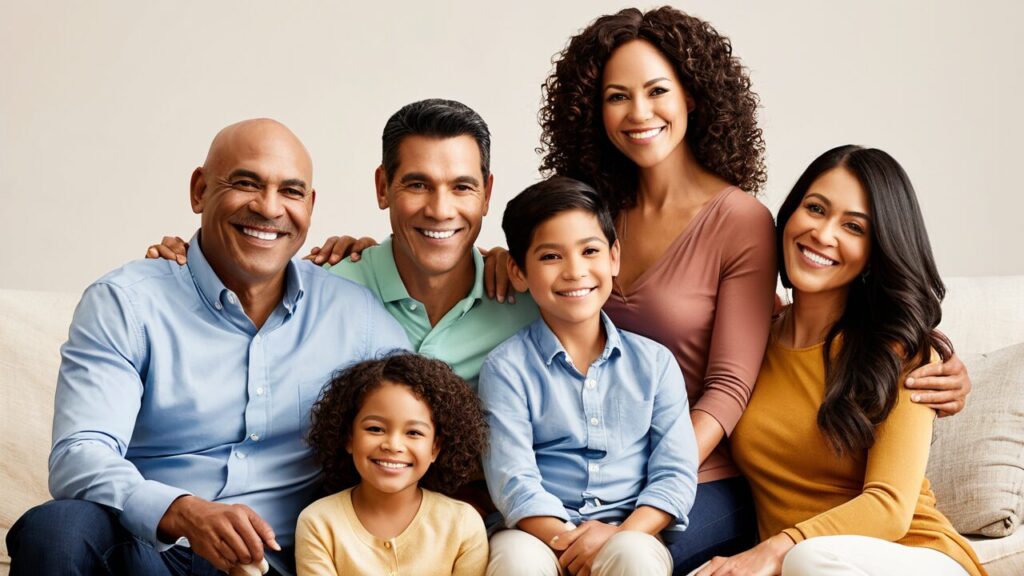
Hey there! Ever wonder how families in the US are shaking things up these days? Buckle up, because the classic white picket fence and 2.5 kids scenario is morphing into something way more diverse and dynamic. ![]() From women calling the shots in their careers to families coming in all shapes and sizes, there’s a lot going on under the hood (or should we say roof). Let’s dive into the why and how behind these shifting family trends, from economic shifts to changing social norms.
From women calling the shots in their careers to families coming in all shapes and sizes, there’s a lot going on under the hood (or should we say roof). Let’s dive into the why and how behind these shifting family trends, from economic shifts to changing social norms. ![]() Ready to explore the fascinating evolution of the American family? Let’s go!
Ready to explore the fascinating evolution of the American family? Let’s go!

The US Marriage Rate has Declined
In fact marriage rate in the United States has been declining for decades. In 1960, the marriage rate was 9.3 per 1,000 people, but by 2020, it had fallen to 5.1 per 1,000 people. Cohabitation, or living together without being married, is on the rise. In 1960, only 5% of couples were cohabitating, but by 2020, that number had risen to 18%. ![]() The number of single-parent households has also increased in recent decades. In 1960, 19% of children lived with a single parent, but by 2020, that number had risen to 25%.
The number of single-parent households has also increased in recent decades. In 1960, 19% of children lived with a single parent, but by 2020, that number had risen to 25%.

Kids are coming later in life
Women are having children later in life than they used to. In 1960, the average age of first motherhood was 21.4, but by 2020, it had risen to 27.4. American families are becoming more diverse, both racially and ethnically. In 2020, 50.7% of children in the United States were non-Hispanic white.
![]() The changes in American families have both positive and negative implications. On the one hand, the increasing diversity of families is a positive development, as it reflects the diversity of the United States as a whole. Additionally, the fact that women are having children later in life can be beneficial for both mothers and children.
The changes in American families have both positive and negative implications. On the one hand, the increasing diversity of families is a positive development, as it reflects the diversity of the United States as a whole. Additionally, the fact that women are having children later in life can be beneficial for both mothers and children. ![]() On the other hand, the decline in marriage and the rise of single-parent households can be challenging for families, as they can lead to economic hardship and other problems.
On the other hand, the decline in marriage and the rise of single-parent households can be challenging for families, as they can lead to economic hardship and other problems.

The Future of the American Family
Overall, the American family is undergoing significant changes. ![]() Families will likely become even more diverse in terms of structure, race, ethnicity, and sexual orientation. Multigenerational households, blended families, and single-parent households might become more common.
Families will likely become even more diverse in terms of structure, race, ethnicity, and sexual orientation. Multigenerational households, blended families, and single-parent households might become more common. ![]() The rise of assisted reproductive technologies and changing social norms could further diversify family formation methods.
The rise of assisted reproductive technologies and changing social norms could further diversify family formation methods.

Technology’s influence on the Family
Technology could play a bigger role in family communication, education, and even caregiving. Remote work and virtual connections might become more prevalent, impacting family dynamics and geographic distribution. ![]() Advancements in healthcare and medicine could extend lifespans, leading to more multigenerational families and potentially impacting family roles and support systems.
Advancements in healthcare and medicine could extend lifespans, leading to more multigenerational families and potentially impacting family roles and support systems.
 The Shifting values of tomorrow.
The Shifting values of tomorrow.
Work-life balance and flexibility might become even more important, potentially leading to changes in traditional gender roles and childcare arrangements. ![]() Prioritization of individual happiness and personal fulfillment could influence family formation and relationships. Environmental and economic concerns might shape family size and consumption patterns.
Prioritization of individual happiness and personal fulfillment could influence family formation and relationships. Environmental and economic concerns might shape family size and consumption patterns.
 New Potential challenges.
New Potential challenges.
Economic inequality and the affordability of housing, healthcare, and education could pose challenges for many families. ![]() Social and political divisions might create tensions within families and communities. The long-term impact of technology on social interaction and mental health within families requires careful consideration.
Social and political divisions might create tensions within families and communities. The long-term impact of technology on social interaction and mental health within families requires careful consideration.
![]() These are just possibilities, and the actual changes might be quite different.
These are just possibilities, and the actual changes might be quite different. ![]() The future of the American family will likely be shaped by a complex interplay of social, economic, technological, and political factors.
The future of the American family will likely be shaped by a complex interplay of social, economic, technological, and political factors.
![]() It’s important to be open to a variety of possibilities and remain adaptable as the American family continues to evolve.
It’s important to be open to a variety of possibilities and remain adaptable as the American family continues to evolve.
To find more AI news go to AITV.



